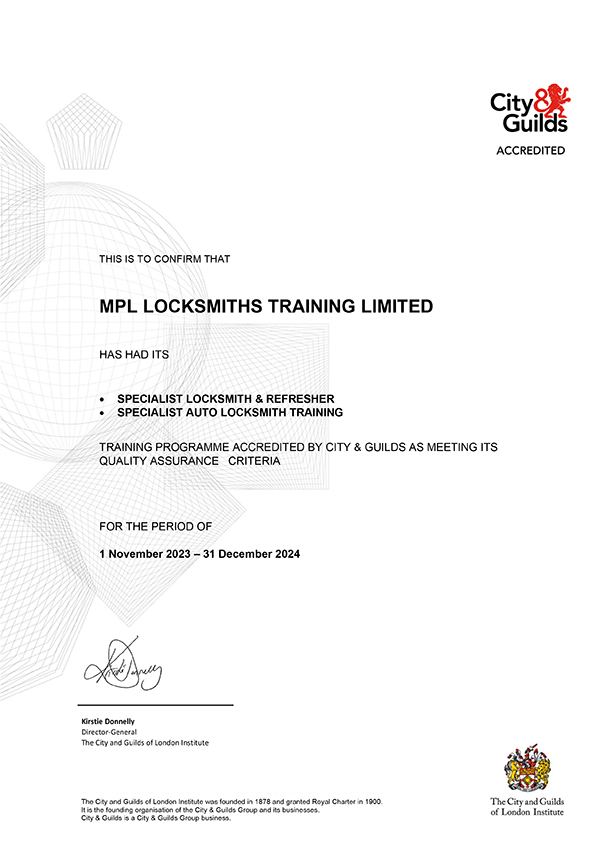A quality uPVC front door will last for many years, but over time it’s normal for these doors to suffer from a slight drop or lean (often referred to as being “out of square”). While one side of the door is fully supported by hinges, the other side – the lock side – isn’t quite as sturdy, which it leans with lean with wear and tear.
This drop or lean can then lead to further problems, including trouble with locking the door, or even a gap that can cause drafts or leaks into the customer’s home during bad weather. Alternatively, the door could begin to rub against the frame and cause further damage – which could lead to a replacement being required. So it’s better to act early and correct the door’s drop using the toe and heel method.
An introduction to toe and heeling doors
A simple and effective way of correcting the door’s drop or lean is toe and heeling. This is a common method used by many locksmiths and uPVC repair engineers when dealing with troublesome door drops, especially when you’ve already tried to adjust the hinges to no avail.
By correctly toeing and heeling the door, you should be able to realign to door with the frame and resolve any leaning that has occurred. Toeing and heeling is essentially using the glass to reinforce the door (much like a support strut on a wooden gate), and getting the glass to support its own weight. This will help to counter the drop, which is caused by the glass in the first place.
If you’re new to this process and want to know how to toe and heel a uPVC door, continue reading for advice on getting started, and our step-by-step ‘how to’ guide.
An introduction to toe and heeling doors
A simple and effective way of correcting the door’s drop or lean is toe and heeling. This is a common method used by many locksmiths and uPVC repair engineers when dealing with troublesome door drops, especially when you’ve already tried to adjust the hinges to no avail.
By correctly toeing and heeling the door, you should be able to realign to door with the frame and resolve any leaning that has occurred. Toeing and heeling is essentially using the glass to reinforce the door (much like a support strut on a wooden gate), and getting the glass to support its own weight. This will help to counter the drop, which is caused by the glass in the first place.
If you’re new to this process and want to know how to toe and heel a uPVC door, continue reading for advice on getting started, and our step-by-step ‘how to’ guide.
Firstly, measure the door drop
Before you start the job, be sure that it’s a door drop you’re dealing with. Carry out some measurements to clarify the issue. Here’s how:
- Measure the door diagonally from corner to corner (top left to bottom right, top right to bottom left)
- Make a note of each of the measurements
- Check if they match
If these measurements do not match, then the door is indeed out of square. The toe and heel method can now be used to reposition the customer’s door so that the measurements are once again equal.
Equipment for toe and heeling doors
Gather your equipment before you begin. The good thing about toe and heeling doors is that you won’t need any special tools, and most of the things you’ll need will be in your tool box already.
Here’s what you need:
- One or two stiff putty knives – these will be used to remove the beading strips
- A glazing shovel – this will help you to lift the door frame
- A selection of packers and shims – these are readily available in many DIY stores
- General purpose clear silicone
How to toe and heel a uPVC door in 7 steps
Once you have your equipment ready, you’re ready to start toe and heeling doors. It’s a relatively simple process, and with practice, won’t take too much time.
Learn how to toe and heel a uPVC door like a pro with these 7 easy steps:
- First, remove the beading strips that hold any glass or panels to the door. It’s best to start with the longer strips and finish with the shorter strips. Simply place your stiff putty knife in-between the beading strip and the frame, about halfway down the strip. From there, gently work the knife as a lever until the beading strip breaks away.
- Once the beading strips have been removed, remove any glass or panels from the door. Look for any packers that are within the frame and remove them, before reinstalling the glass or panels into the door frame. When you fit the glass or panels back into the frame, move it as close to the locking side of the door as possible, so that there’s a gap on the hinge side. From there, you should measure the distance between the glass or panel to the top of the frame and the distance between the glass or panel to the hinged side of the frame. Make a note of these measurements.
- Using the measurements detailed above, take two packers that are half of the total width of the measurement (e.g. for an 8mm gap, packers need to be around 4mm). Again, using the measurements detailed above, another two packers should be half of the total height measurement (from the glass or panel to the top of the frame). Once you have these packers ready, you can begin to position them within the frame.
- Using the clear silicone, place one of the width-based packers and one of the height-based packers within the bottom left corner of the frame. Each of the packers should be positioned around 50mm away from the corner, further along the longer door strip. These packers will help to distribute the pressure evenly. From there, you can add the glass or panel back into the frame.
- The glass or panel will naturally lean slightly towards the locking side of the door, which can be corrected by placing the glazing shovel into the lock side and gently pushing the glass of panel towards the hinged side. To hold this in place, add the second width-based packer to the top right corner of the frame – again, 50mm down from the corner.
- Now you will need to use the glazing shovel on the top of the lock side of the door, and work it gently to lift the frame into place, before adding the second height-based packer to the top right corner of the frame – 50mm left of the corner.
- Once all the packers are in place, check that the frame and the door panels are level with one another. Then test whether the door is able to open, close and lock properly, before refitting the beading strips.
Top tip for how to toe and heel a uPVC door:
For added strength and security, add two further packers to each side of door.












